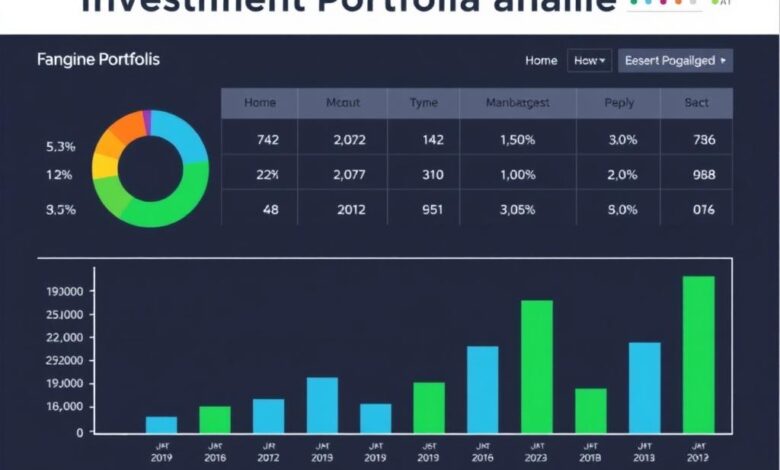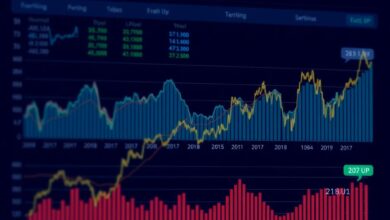The difference between growth and value investing

The choice between different investment strategies can significantly influence your portfolio’s performance. If you aim for substantial capital appreciation, consider focusing on companies that exhibit strong potential for future earnings growth. These stocks often show higher price-to-earnings ratios and may not pay dividends, as profits are typically reinvested to fuel expansion.
On the other hand, a more conservative approach emphasizes acquiring shares of undervalued companies. This strategy seeks to identify stocks trading below their intrinsic value, often characterized by low price-to-earnings ratios and consistent dividend payments. By investing in these assets, you capitalize on the market’s tendency to correct mispricing over time.
Both methodologies require a long-term perspective; however, their paths diverge sharply in terms of risk tolerance and market behavior. Engaging with either strategy demands thorough analysis–understanding financial metrics and market trends is essential to making informed decisions that align with your financial goals.
Defining Growth Investing
A strategic focus on companies poised for substantial expansion characterizes this method. Investors seek stocks with robust revenue and earnings growth, often exceeding the market average. Targeting firms in emerging sectors like technology or biotechnology is common, where innovation drives potential returns.
Long-term performance hinges on identifying businesses capable of sustaining high growth rates. Metrics such as price-to-earnings ratios may appear elevated compared to industry peers, reflecting anticipated future gains rather than current profits. This approach emphasizes the importance of thorough research into a company’s fundamentals, including its competitive positioning and market trends.
Investors should consider diversifying their portfolios with a mix of high-growth opportunities while managing risk through sector allocation. Regularly reviewing performance against benchmarks can help gauge success and adjust strategies accordingly.
Ultimately, a commitment to understanding the dynamics of chosen industries and remaining patient during market fluctuations defines effective stock selection in this investment philosophy.
Understanding Value Investing
To successfully engage in this approach, focus on identifying stocks that are undervalued relative to their intrinsic worth. This strategy requires a diligent analysis of financial statements, market trends, and economic indicators.
- Price-to-Earnings Ratio: Look for companies with a lower P/E ratio compared to industry peers. This can indicate potential undervaluation.
- Dividend Yield: Prioritize stocks offering consistent dividends, which often reflect a company’s stability and commitment to returning value to shareholders.
- Book Value: Assess the book value per share; stocks trading below this metric may be worth considering.
- Debt Levels: Analyze the debt-to-equity ratio. A lower ratio suggests better financial health and reduced risk.
This investment style emphasizes long-term capital appreciation while minimizing risk through thorough research and patience. Set clear financial goals to guide your stock selection process.
- Conduct a detailed evaluation of potential investments based on fundamental metrics.
- Create a diversified portfolio to spread risk across different sectors.
- Monitor your selections regularly, but avoid reacting hastily to short-term market fluctuations.
The ultimate aim is capital growth over time, aligning investment choices with your long-term financial aspirations.
Metrics for Evaluation
To assess stocks effectively, focus on specific indicators that align with your long-term financial goals. Begin with Price-to-Earnings (P/E) Ratio, which compares a company’s share price to its earnings per share. A lower P/E often suggests undervaluation, while a higher P/E indicates growth expectations.
Next, consider the Price-to-Book (P/B) Ratio. This metric shows how much investors are willing to pay for each dollar of book value. A P/B under 1 may highlight potential value opportunities in underpriced assets.
Earnings Growth Rate is another critical factor. Analyze historical and projected earnings growth to gauge the company’s performance trajectory. Consistent growth often attracts investors seeking robust returns over time.
Dividend Yield serves as an important indicator for income-focused strategies. Evaluate the dividend payouts relative to the stock price; higher yields may indicate strong cash flow and management confidence in sustained performance.
Finally, examine Return on Equity (ROE). This ratio measures profitability by revealing how effectively equity capital is utilized. A higher ROE suggests efficient management and can be a signal of strong future performance.
Selecting the right metrics tailored to your investment strategy will enhance decision-making and optimize portfolio outcomes over time.
Risk Factors Comparison
Investors should assess the inherent risks associated with various stock approaches to align with their financial objectives. For those favoring an aggressive stance, the potential for high returns is accompanied by significant volatility. Rapidly expanding companies often face unforeseen challenges, including competitive pressures and market saturation, which can lead to sharp declines in stock value.
Conversely, a more conservative strategy typically offers stability but may result in slower growth. Companies that are undervalued might not achieve quick appreciation due to broader economic conditions or sector-specific downturns. These stocks can be sensitive to macroeconomic factors like interest rate changes and inflation, impacting their performance over time.
Liquidity risk also varies between strategies. High-growth stocks may attract substantial investor interest, leading to higher liquidity. However, if sentiment shifts or earnings disappoint, these stocks can experience rapid sell-offs. In contrast, undervalued stocks might trade less frequently, potentially complicating the execution of buy or sell orders without affecting the price significantly.
Lastly, investors must consider their time horizon when evaluating risk profiles. Short-term traders might find high-growth options appealing due to potential quick gains; however, they must remain vigilant against market fluctuations. Long-term holders of undervalued assets may endure periods of stagnation but could benefit from eventual market corrections that recognize true company value.
Investment Strategies in Practice
Focus on a diversified portfolio that includes both high-growth and undervalued equities to align with your financial objectives. This balance allows you to benefit from the potential of rapidly appreciating stocks while mitigating risks through stable, lower-priced assets.
When selecting individual shares, prioritize companies with strong fundamentals and robust earnings growth for long-term appreciation. Analyze metrics such as revenue growth rate, profit margins, and return on equity to gauge their future potential.
Consider using dollar-cost averaging as a strategy to reduce market volatility risk. By investing a fixed amount regularly, you can purchase more shares when prices are low and fewer when prices are high, leading to a potentially lower average cost per share over time.
Stay informed about economic trends and sector performance. Regularly review your holdings and adjust based on market conditions or changes in the companies’ fundamentals. This proactive approach helps ensure that your investments remain aligned with your overall financial goals.
Utilize technical analysis alongside fundamental assessments to identify entry and exit points for trades. Understanding stock price movements and patterns can enhance your decision-making process significantly.
Lastly, maintain a long-term perspective. Short-term market fluctuations should not deter you from sticking to your investment plan. Commitment to your strategy is essential for achieving sustainable results over time.







